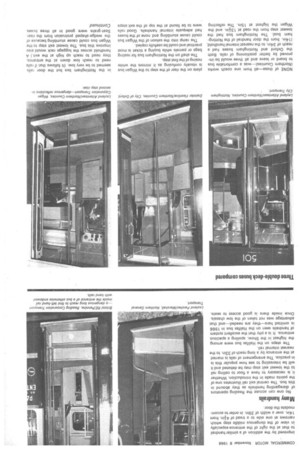Three double-deck buses compared
Page 49

If you've noticed an error in this article please click here to report it so we can fix it.
NONE of these—all from one coach works (Northern Counties)—was a comfortable bus to board or leave and all three would be improved by better positioning of rails. Both the Oxford and Nottingham buses had a reach of 34in. to the nearest internal handhold. (14in. from the door handrail of the Nottingham bus). The Nottingham bus had the lowest step from the road at 13-iin. and the Wigan the highest at 15in. The reflecting plate on the riser of the step to the Wigan bus is visually confusing as it mirrors the white nosing of the first step.
The shelf on the Nottingham bus for resting bags or parcels while buying a ticket is most practical and could be usefully copied.
The ramp into the saloon of the Wigan bus could cause stumbling and none of the buses had adequate internal handrails. Good rails were to be found at the top of the exit steps in the Nottingham bus but the door rails seemed to be very low. (It follows that if rails need to reach low down at the entrance, they need to reach up high at the exit.) A handhold across the luggage rack would also improve this bus. The lowest exit step to the Wigan bus could cause stumbling because of the wedge-shaped protrusion from the riser. Seat-grabs were good in all three buses. Continued




























































































































































